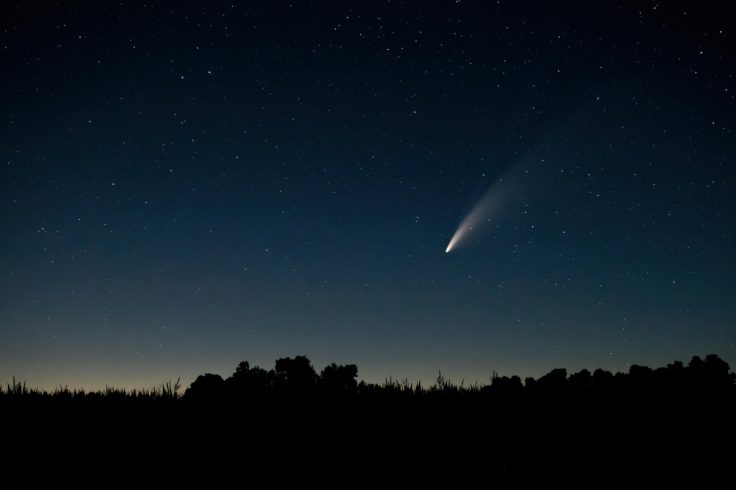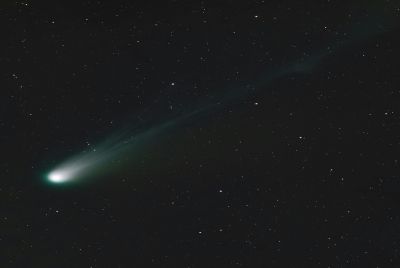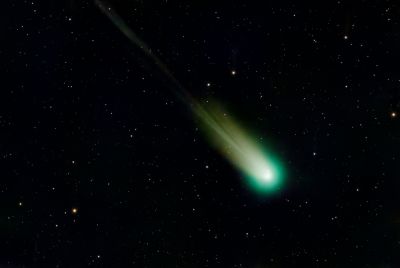C/2025 T1: Astronomers Baffled by Sudden Outburst — Glows Brighter Than Ever Before
Experts are debating if the surge was caused by a massive internal fracture or an eruption of gas and dust

For months, Comet C/2025 T1 was a faint fixture in the night sky. Now, the icy wanderer has sprung a spectacular surprise. Astronomers are scratching their heads after the celestial body suddenly erupted in a blinding display, transforming from a dim object into a stunning beacon that shone with unprecedented intensity. What caused this sudden, dramatic surge? The answer remains elusive, but the show is far from over.
A new cosmic event is captivating observers. Comet C/2025 T1 (ATLAS) has surprised scientists with its rapid increase in luminosity, sparking renewed discussion about the cause of the sudden flare-up.
A Dawn Discovery in the Heavens
The picture accompanying the announcement, snapped just hours ago by an unmanned observatory in the Utah desert, reveals a bright, spectral orb with a subtle train extending into the dark. As per the update from Astronomy Vibes, the comet's core 'has expanded into a massive glowing cloud over 400,000 km wide, releasing dust and gas in all directions'.
🚨 Something Just Woke Up in Deep Space — and Astronomers Can’t Explain It Yet 🚨
— Astronomy Vibes (@AstronomyVibes) November 10, 2025
A mysterious new comet — C/2025 T1 (ATLAS) — has suddenly lit up the night sky, glowing brighter than ever before.
Captured just hours ago from a remote telescope in the Utah desert, this image… pic.twitter.com/m3k7MUx0uy
The post adds that 'no one expected it to brighten this fast — or this much'. This abrupt illumination makes this celestial object one of the most fascinating bodies currently observed in the Solar System, and it's accelerating nearer with each passing night as it moves toward the Sun.
READ MORE: Daniel Liszt and Avi Loeb Join Alex Jones as He Claims CIA/Mossad Shaping 3I/ATLAS Story
READ MORE: Where Is the Comet's Tail? Loeb Raises Red Flag as Luna Demands Answers on 3I/ATLAS
Expert Commentary
In a recent report by Sky & Telescope, it was noted that the comet had brightened from approximately magnitude 16 at discovery to around magnitude 10 over just a few weeks. The article states, 'Comet C/2025 T1 (ATLAS) brightened very quickly ... and is now around magnitude 10, but it does seem to have stopped brightening at magnitude 10'.
It continues that 'Speculation is now about what made it brighten so quickly, a major eruption of course and what might have been the cause'.
The author documented that on 3 November, the envelope of gas and dust around the nucleus (the coma) measured roughly four arc-minutes wide under a moonlit sky, compared to 2.4 arc-minutes just five days prior. As of now, the comet is predicted to stay near magnitude 10 as it nears Earth on 14 November and then makes its closest pass to the Sun (perihelion) on 2 December.
Why the Sudden Eruption?
Several explanations exist. One idea suggests the comet's inner structure experienced a rapid breakage or an explosion on its surface, spewing out a flood of material in a brief period. The 'massive glowing cloud' mentioned in the X message suggests an event that surpasses the normal, gradual activity.
Comets usually shed material slowly as they approach the Sun; yet, sudden increases in brightness are frequently linked to pressure from internal gas — possibly due to the sudden release of volatile frozen elements or a structural failure that initiates new surface exposure.
Due to the intensity and speed of the brightening in this situation, researchers are favouring a massive explosion or fragmentation hypothesis.
The Importance of This Event
Since the comet is now far brighter than anticipated, it presents a rare opportunity for both amateur and professional astronomers to study its development. This higher level of luminosity makes spectral and visual data gathering more viable — allowing researchers to determine the components of the material (dust and gas) and track how the coma and tail change over time.
Meanwhile, the general public receives a bonus, this sudden visibility serves as a potent reminder that the Solar System remains unpredictable and full of amazing discoveries.
READ MORE: 3I/ATLAS Shock: Comet Repeats 'Alien Tech' Anomaly
READ MORE: 3I/ATLAS Challenges Models of Comet Behaviour After Highest Eccentricity Recorded
A Quick Clarification
It's vital to understand that C/2025 T1 (ATLAS) is not the interstellar body 3I/ATLAS found earlier this year in Chile. The objects share the 'ATLAS' name solely because they were both located by the same survey, the Asteroid Terrestrial‑impact Last Alert System (ATLAS). Nevertheless, C/2025 T1 is a standard comet originating in our Solar System, not an interstellar traveller.
Observing the Comet
Non-professional telescope users, as well as those with good binoculars, should direct their attention to the west in the evening, immediately after sunset. Although the comet's tail is still faint, it may become noticeable now that the coma covers hundreds of thousands of kilometres. The image provided by Astronomy Vibes perfectly captures this — its spectral light and subtle tail hint at the dramatic spewing of dust and gas.
Nevertheless, it is essential to remember that its brightness could level off or decrease if the burst of activity has now finished. The Sky & Telescope report notes the brightening 'does seem to have stopped brightening at magnitude 10'. Therefore, watching now is crucial.
In a celestial field where most comets pass quietly unnoticed, this particular one truly distinguishes itself. Whether caused by a swift eruption or a shift in structure, C/2025 T1 (ATLAS) is a stark reminder that — even in our thoroughly mapped Solar System — the unforeseen can still occur. Keep your telescopes focused upwards. Something truly remarkable may indeed be happening.
© Copyright IBTimes 2025. All rights reserved.





















